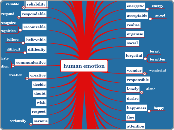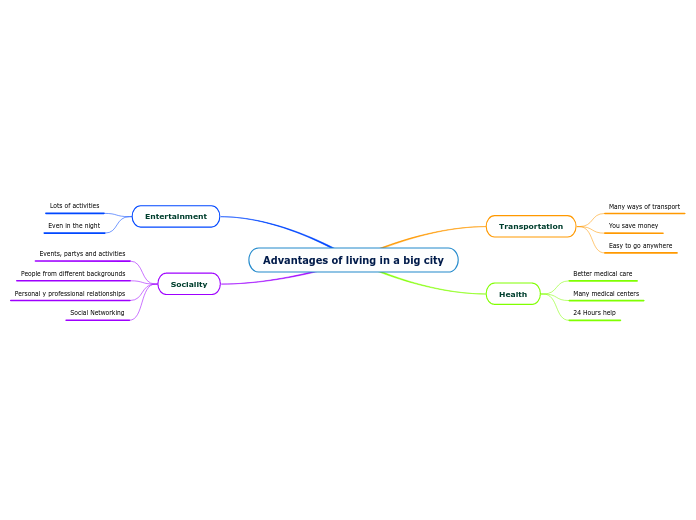TRENDS
TRENDS IN FOOD PRODUCTS
TRENDS IN EATING PATTERNS
Gluten Free Diet
-Gluten is a protein found in some carbohydrates e.g., rye, wheat & barley.
-Gluten is also found in many processed foods e.g., soups, sauces & salad dressings.
WHY: Many individuals choose gluten-free diets due to Celiac -Disease or gluten sensitivities that cause bloating, constipation, headaches & fatigue
Organic Diets
-Food labelled organic must meet the standards set out by the -Canadian Organic Standards of the Government of Canada.
-The food must be grown & produced without the use of synthetic fertilizers or pesticides, hormones or genetic modifications.
-Antibiotics can be used on organic livestock only in the case of a health emergency.
WHY: Health & safety, Nutrition, Taste, Concern for the environment, Concern for animal welfare.
Vegetarian Diets
-Vegan; consumes no animal by-products e.g., honey & rennet.
-Lacto-vegetarian; may consume dairy products.
-Lacto-ovo-vegetarian; may consume dairy products & eggs.
-pescatarian; may consume dairy products, eggs & sometimes fish or seafood.
WHY: Animal welfare, Health considerations, Environmental concern, Economic factors,Religious tradition.
TRENDS TODAY
Why They Get Popular
NUTRITION - LOCAL AND GLOBAL FOOD ISSUES
Sustainable Food Systems
WHAT IS A FOOD SYSTEM
Social sustainability: Food systems must be socially responsible and
make nutritious food available, accessible, and affordable to all. They
must build farmers and workers throughout the system. They must
also contribute to the vitality of rural communities, villages, and small
towns, and they must be humane and just.
Economic sustainability: Food systems must ensure that farmers obtain a price for their farm products that covers the cost of production and allows them financial well-being. Also, agriculture must be a profitable industry that generates employment.
Environmental sustainability: Food systems must be
ecologically sound, meaning that they must not deplete natural resources. They must also protect and conserve the natural environment-especially soil, air and water
A sustainable food system is one that is considered to be environmentally, economically, and socially sustainable.
GMOs
HORMONES
ISSUES WITH GMOS
GMOS In Canada
Health Canada groups GM foods into a category called “Novel Foods”.
Foods resulting from a process not previously used for food;
Products that have never been used as a food; or
Foods that have been modified by genetic manipulation, also known as genetically modified (GM) foods, genetically engineered foods or biotechnology-derived foods
Potatoes, corn, canola, tomatoes, squash, soybeans, flax are all examples of crops processed into the goods in grocery stores.
(Fries, cakes, oils, sugars, sauces)
Without mandatory labeling.
Statistics
70% of processed foods in Canada contain GM ingredients.
Most common are corn, soy, canola and cotton.
2001 the area of genetically modified crops grown globally was 52.6 million hectares. That is an area the size of France or Spain. This includes food and non-food crops
4 countries produced 99% of the world's genetically modified crops. These are:
USA (68%) Argentina (22%) Canada (6%) China (3%)
More than 80% of canola grown in Canada and a high proportion of the country’s soybean and corn crops are genetically modified.
More than 80% of canola grown in Canada and a high proportion of the country’s soybean and corn crops are genetically modified.
IMPACTS:
1.4 billion farmers in developed countries depend on “saved seeds” and seed exchanges (50% of crops)
1998 Monsanto sued 100 US soybean growers and hired “Pinkerton” agents to track down “seed savers
“Pineland Seed Company” was granted patent in 1998 for “terminator technology” seeds do not germinate if planted for second time
WHY
Examples
How they are created:
Created by inserting DNA from one organism into another (I.e. fish genes into apples) OR modifying an organism’s DNA to attain a desirable trait. (I.e. a tomato with reversed DNA to slow down ripening).
Sequences that code for proteins can be moved from one organism to another:
1. Find an organism with the desired trait
2. Isolate the gene sequence that codes for the desired trait
3. Insert the gene sequence into the genome of the plant cell
4. Allow the genetically altered cell to grow into a plant
5. Allow the plant to propagate
Genetically modified organisms
Foods that contain an added gene sequence, Foods that have a deleted gene sequence, Animal products from animals fed GM feed, Products produced by GM organisms. This was seen in the films watched in class. The film,
Technology in Food Production
Organic foods: farming practices that do not use petroleum-based synthetic chemicals.
Sustainable farming: the quality of not being harmful to the environment or depleting
natural resources, and thereby supporting long term ecological balance.
Integrated pest management: an ecological approach to pest management that combines understanding the causes of pest outbreaks, manipulating the crop ecosystem for pest control, and monitoring pest populations and their life cycles to determine if and when the use of pesticides is indicated.
Genetically modified foods: are foods produced from organisms that have their specifici changes introduced to their DNA using the genetic engineering.
Hydroponic farming: to grow plants in a nutrient solution root
medium. It is a growing area of commercial food production and also used for home food production by hobbiest.
Intercropping: to grow one crop between the rows of another(different crop), as in an orchard or field.
Crop rotation: the system of varying successive crops in a definite order on the same ground, especially to avoid depleting the soil and to control weeds, diseases, and pests.
Food security/ insecurity
Carbon Footprint
Solutions: Eat Local. WHY:
Environmental: Locally grown foods travel shorter distances, Generates less CO2 emissions and other greenhouse gases
Benefits Local Economy: small farmers and stores
Sustainable national food supply: no imports/exports
Better food quality: fresher, tastier food
Better health: health benefits. Concern over foods produced in countries with low health, safety and environmental standards. Canada’s food safety regulations “tough” in comparison to many other countries. Management of pesticides, facility inspections, etc.
A measure of the impact our activities have on the environment, especially climate change.
Relates to the amount of greenhouse gases produced from burning fossil fuels for electricity, heating, transportation, etc.
Food Miles
The distance a food travels from its source
(Food travels from the farmer who grew or produced it, to the consumer who finally eats the food).
Includes the journey from farm to processor, from processor to retailer, and from retailer to consumer
- The average North American meal travels 2400 kilometers from field to plate!
- 500g of lamb from New Zealand, you would generate 8 kg (8000g) of CO2!
Factors that affect food choices
Trends
Allergies/Intolerance
If someone is allergic to a food, they cannot consume it, even though it has vital nutrients and vitamins. For example, many people are allergic to milk, fish and eggs, which are extremely prevalent in almost every food and provide excellent nutrition. However, these people cannot consume it.
Time/Convenience
If someone has a busy schedule, they are more likely to skip a meal, or eat a smaller amount. Also, they might choose to each something that is easier to be accessed. (Ex: If McDonalds is closer than a farm, a person is more likely to go to McDonalds, since they are everywhere because of globalization and industrialization).
Social
Food choice is influenced by attitudes and habits that develop through interacting with others, such as friends, etc. (Ex: A friend tells you that she loves to eat a specific food from a restaurant, which will make you want to eat it).
Family
Family heads could decide on what to feed the rest of the family, and be their own judge of what might be healthy or unhealthy. (If a food is too sugary, they might not buy it).
Religious
Some religions have dietary restrictions on them, which means that the followers of that religion must comply with the restrictions. (Ex: cannot eat meat)
A measure of the availability of food and individuals' accessibility to it, where accessibility includes affordability.
Political Influences
In the documentary, SuperSize Me, that was watched in class, When Morgan tried to contact Mcdonalds owners to book an interview in order to understand why they are promoting such products that can prove to be fatal for human health. It took a long time for him to get a hold of the corporation, but once did, he could not get an interview with her. The food corporations are guilty of destroying human health, and they know it, which is why they do not want to be interviewed.
Because of their enormous financial and political resources/influence, corporations and the government agencies that regulate them have a huge influence over our food choices and the information we receive about them. With their huge advertising budgets and conspicuous presence in schools, entertainment media, and civic life, today’s giant food companies have had an easy time ingraining their products into our culture and transforming our way of eating, in an unhealthy direction. At the same time, the government agencies charged with regulating the food industry have been more concerned with protecting their own financial interests than protecting the public health.
Over the past century, the Food Industry has helped move whole plant foods away from the customers, replacing them with a highly processed, animal product centered diet that is rich in salt, sugar, fat, and chemicals. This is causing a worldwide epidemic of diet-related diseases such as heart disease and diabetes, ecological devastation stemming from unsustainable agricultural practices, and the widespread exploitation of farm and food industry workers. Because of these troubling social, public health, and environmental costs, a diet based on whole, unprocessed plant foods, and policy reforms that would make such a diet accessible and affordable to all, are what’s needed.
Eating habits are not personal feelings, but rather the result of a social and economic environment that does not support making healthy food choices.
Political influences can affect our food choices.









